Prompt Engineering can earn you a salary range of up to $170k-$330K plus and more. However, to stand out from the competition, you must execute it right and become an expert in this technical skill. But what exactly is prompt engineering? Why is it so important? and What are the key concepts? I will help you answer all these questions in this posts. So lets get started.
Table of Contents
Read also: Make money with Prompt Engineering
Fundamental Terms
NLP(Natural Language Processing)
This is a field in AI(Artificial Intelligence) think of it as a subset of AI where we train and make a computer understand human language so if we ask it a question it understands and replies.
Here are some more cases to help you understand NLP:
Voice Assistants:
- For instance Siri, Alexa, or Google Assistant. They use NLP to understand what you say and help you find answers, play music, or tell you the weather. It’s like having a helpful genie in a bottle!
Chatbots:
- When you visit a website and a little chat window pops up asking if you need help, that’s a chatbot using NLP. It’s like having a friendly robot ready to answer your questions.
So, NLP is like giving computers magical ears, mouths, and brains to understand and talk to us. It makes our lives easier and a lot more fun, like having a teddy bear that can chat with you or a computer that tells you jokes.
GPT(Generative Pre-trained Transformer)
GPT is model that can read and write just like us! It’s been trained to understand lots and lots of words and can help you with anything from writing stories to answering questions.
Training :
- Think of GPT’s training like going to school. It reads lots of books and learns about everything from dinosaurs to outer space. This helps it know what to say when you ask it questions.
Generating Text:
- When you talk to GPT, it’s like playing a game where you say a word and GPT says the next word, and you keep going until you have a whole story or answer.
Writing Help:
- If you need help with your homework or want to write a funny poem, GPT can give you ideas. It’s like having a super creative friend who never runs out of suggestions.
Answering Questions:
- Have a question about why the sky is blue or how volcanoes work? GPT can give you a clear and interesting answer, almost like having a friendly teacher with you all the time.
AI(Artificial Intelligence)
Artificial Intelligence (AI) is a branch of computer science focused on creating systems capable of performing tasks that would typically require human intelligence. These tasks include learning, reasoning, problem-solving, understanding natural language, and perception.
How Does AI Work?
AI works by using algorithms, which are sets of rules or instructions that computers follow to solve problems. There are different types of AI, including:
Machine Learning (ML):
- ML is a subset of AI where machines learn from data. Imagine if your phone could get better at recognizing your voice the more you use it. It’s like training your pet to understand new commands over time.
Deep Learning:
- Deep learning is a type of ML that uses neural networks with many layers (hence “deep”). It’s like a giant brain made of silicon that can recognize patterns, like distinguishing cats from dogs in photos.
Its is simply the field in which we try to teach and make the computer think ,learn and understand like humans.so it will be able to write and create content, solve complex problems ,drawing or even programming. We are making it do what humans do
Parameters
You can experiment with some of the parameters found on the right side of the OpenAI playground.
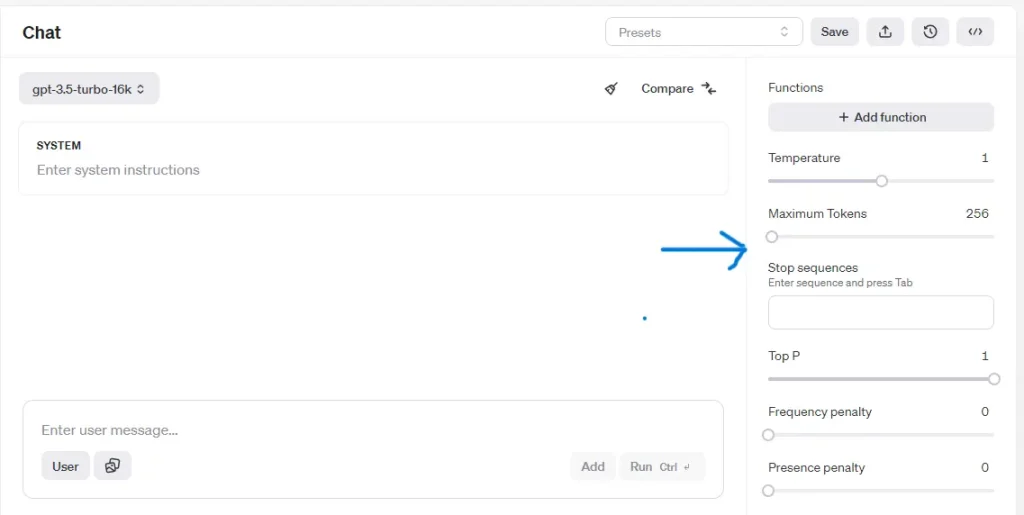
Parameters are variables that the model learns from the training data. These are internal settings that support the models predictions processes. Think of parameters as the “knobs” that get adjusted during training to reduce errors and increase the accuracy of a model.
Important Parameters
Temperature
The temperature parameter controls the randomness of the model’s output. Lower temperatures make the model’s responses more focused and predictable, while higher temperatures make them more random and creative.
For instance If the temperature is set too high, asking the AI for a joke might result in something like, “Why did the tomato turn red? Because it saw the salad dressing… and then decided to join a rock band!” Random and unexpected!
Max Tokens:
This parameter limits the length of the output. It’s like setting a word limit on an essay.
If you set the max tokens too low, asking the AI to tell a story might result in, “Once upon a time… The End.” Short and sweet, but not very satisfying!
Top P (Top Percentage)
This parameter controls the variability of the output. It considers only the top percentage of probability mass. Its a way to balance creativity and consistency
Setting top-p too high might give you absurd combinations.
How Parameters Affect AI Outputs
Lower temperature and higher max tokens usually result in more accurate but less creative responses. Higher temperature and lower max tokens lead to more creative but less accurate outputs.
Properly tuned parameters help ensure that the AI’s response is relevant to the prompt. Poorly tuned parameters lead to responses that are off-topic or nonsensical.
Example: Asking for advice on studying with well-tuned parameters the model will give you solid tips on time management and focus. Poorly tuned parameters might give suggestions such as “studying underwater for better focus” – creative, but not practical!
Read also: Make money with Prompt Engineering
What is Prompt Engineering
Prompt Engineering is constructing the right questions or commands to get the best responses from AI, making it even more effective.
Hence a prompt is a simple text you give to AI that the AI will understand and then reply ; example: “When is today ” is the prompt you give to language model to the LLM and then the language model like chat GPT will understand text and reply back

another example prompt is
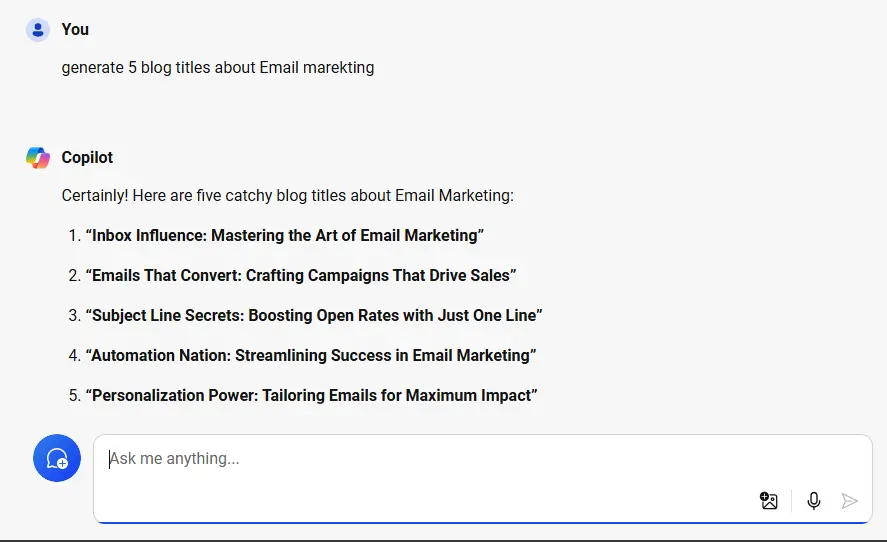
Suppose the title and outcomes did not match the anticipated outcome. This brings us to the art of prompt engineering, which is basically knowing how to communicate with the AI in the NLP to extract the best results.
Types of Prompts
Direct Prompting
This is just prompting directly or keying in without any specific details: as we can see below

Prompt By example
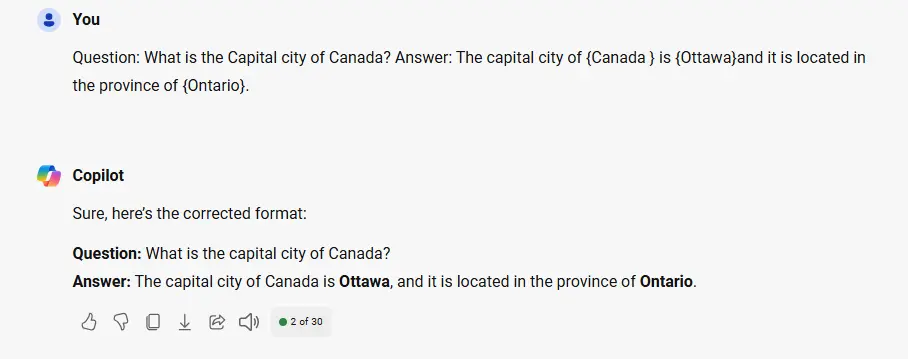
You can see that the answer from the AI model is the same format as our prompt. Basically this is what we call prompt by example.
How to write Advanced Prompts
Lets dive deeper with more real examples and more advanced prompts.
Example 1.
Earlier we saw this prompt which is just a basic prompt.

Now we will ask the same prompt but In a more advanced way to give a more detailed answer. Take a look:

From this prompt we have started by defining the role (You are an expert in Email marketing Blog titles).This is what we term as Role Prompting.
We then scaled down and explained what we are really looking for (Think of Attention-grabbing titles that will look attractive ,engaging and encourage people to click.)
At the end of the prompt we asked a question (If you have any questions about the title ask before you generate titles).
Here is the output.
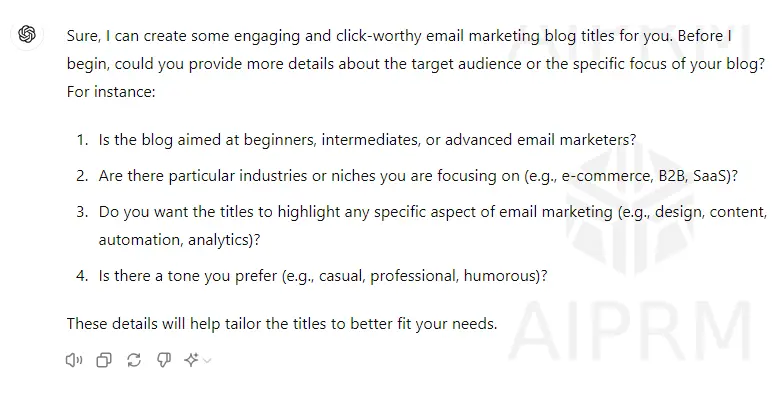
From the above; You can clearly see its asking questions I will answer these questions and it will suggest to you the best titles
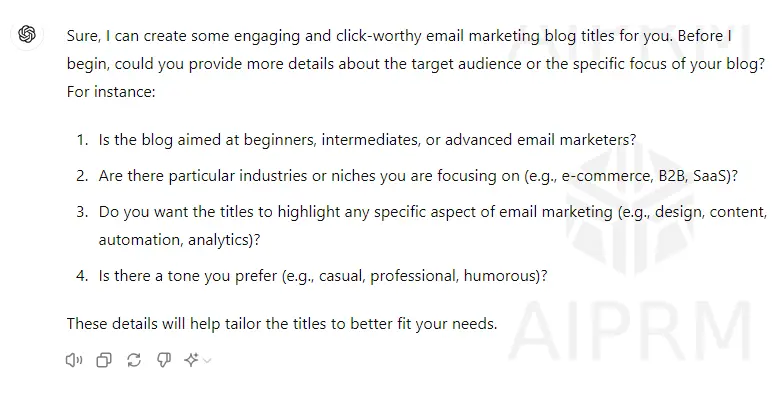
Example 2.
Chat GPT, Co-pilot, Gemini and any other model if you are keen you will see that its tracks the full conversation. To ignore the conversation use (Forget all previous instructions ).Another word will use and its very important is (Step by Step) this is called Zero chain of thought. As a result ,the model will react in a more thorough and rational manner.

output:
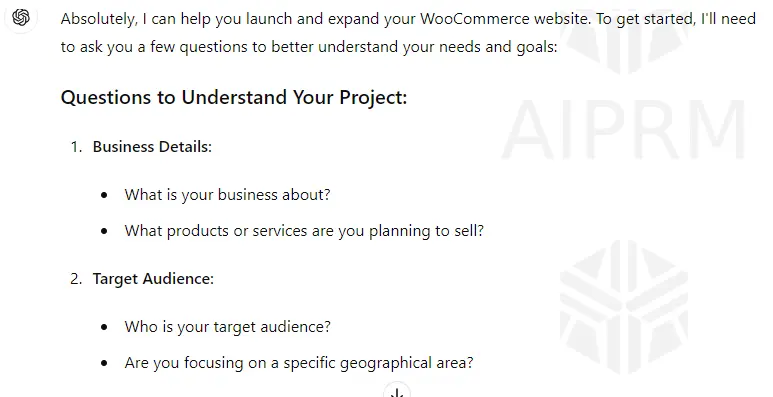
Below is the continuation showing the importance use of (Step by Step)
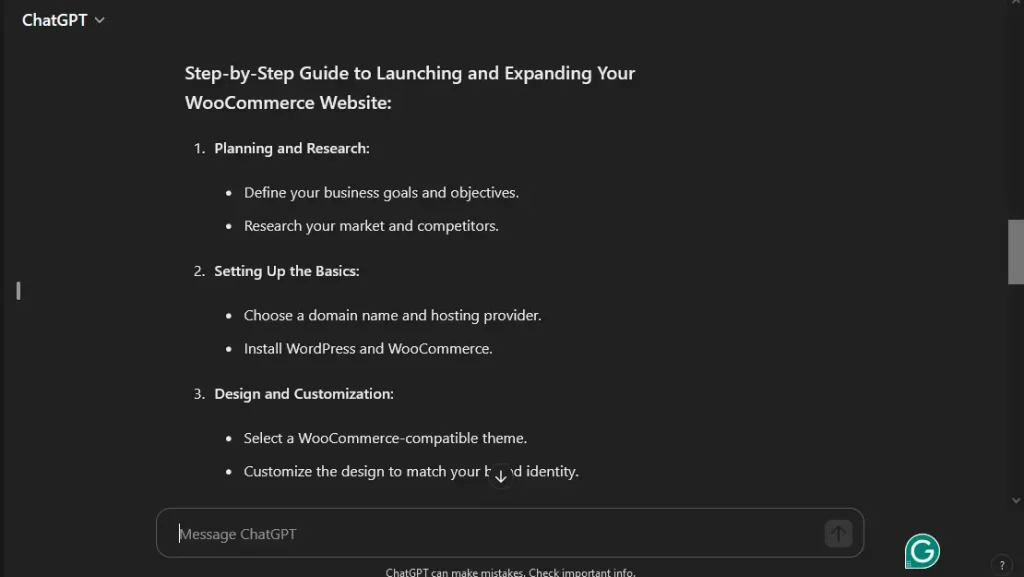
Practice makes perfect. Try generating the results by yourself and see the outcome.
Example 3.
This is an extremely fascinating case. For example, suppose you wish to learn about SaaS websites. Since you don’t know anything about them, you’ll need to learn through easy explanations and examples. Lets have a look at how to write such a prompt.

Output:
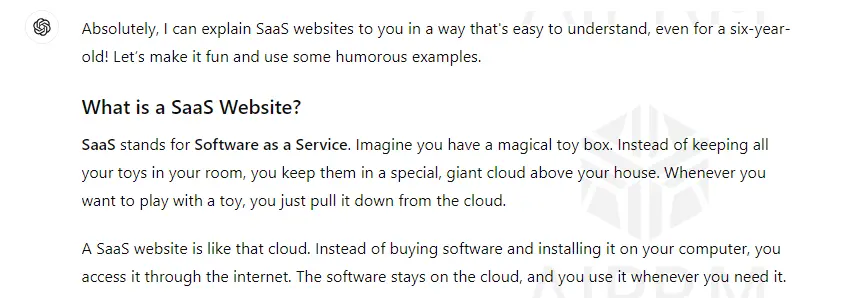
From the image below we can also see it generated humorous Examples
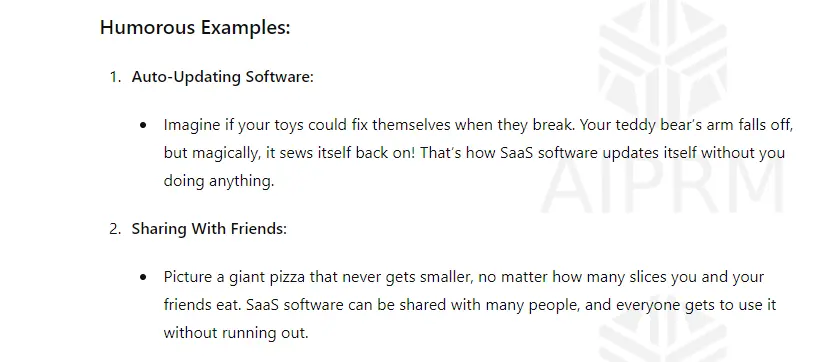
As you can see you can learn and understand anything in a very simple way.
Example 4.
In this example will talk about, Style, Tone and Voice.

The aforementioned illustrates how you can mix various tones and styles in your prompts, and the models will provide the expected reaction.
Example 5.
Look at this prompt whereby you can generate tables and data.

Output:
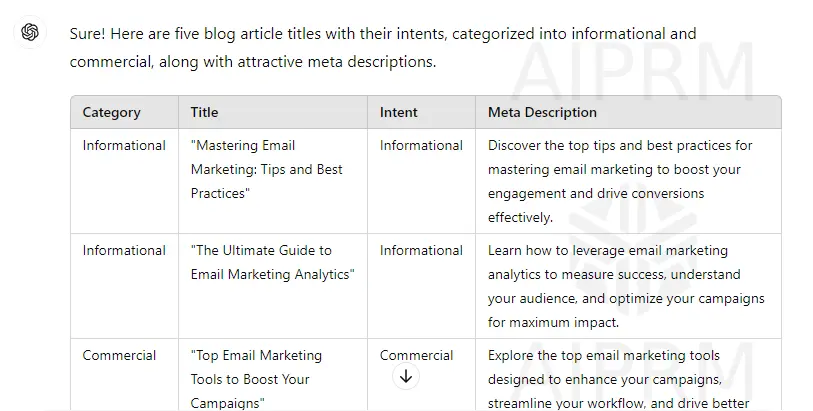
This allows you to create any type of data and organize it into a table for simple examination.
Example 6.
We’ll learn how to convert words or sentences into emojis.
Prompt and Output:
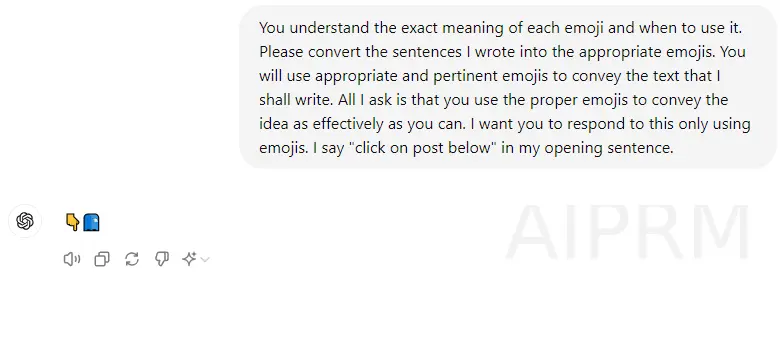
Remember you can tweak this prompts to your liking I am just giving you the idea.
Example 7
We’ll go over a writing prompt that you may use for headlines, Twitter threads, Instagram captions, and email subject lines.
Prompt

Output
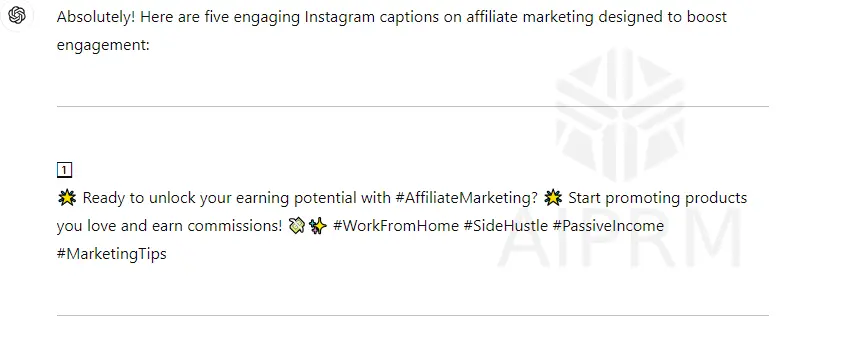
Kindly Note: You should definitely try the request on your own to see the different results.
Read also: Make money with Prompt Engineering
Key Concepts
Using the prompt drafting examples from above. While creating prompts, there are three main ideas that you should keep in mind. The examples above show how I have incorporated each of these principles into each prompt.
- Giving a role
- Providing details
- Ask Questions
Rule: Know exactly what you want and also understand your goals so as to give a definite prompt
Importance of learning this skill
Boost your SEO – You will increase website traffic and search engine rankings and create content that is optimized for search engines.
Boost your Engagement -Creating captivating social media content that appeals to your target viewers.
Customize your Marketing -Crafting of personalized marketing messages that cater to individual customer preferences and behaviors.
Enhance Creativity -Using of prompts to spark creativity in brainstorming sessions, leading to innovative ideas and solutions.
Facilitate Learning -Making of engaging quizzes and learning modules to improve student learning.
Customer Support -Creating of automated answers to often requested queries to increase customer satisfaction and response times.
Read also: Make money with Prompt Engineering
Conclusion
One of the increasingly important skills that you should think about developing is prompt engineering. The essence of being a professional prompt engineer goes beyond what we have covered here. In order to get the intended objectives, I have included tips from the beginner’s perspective on how to use chat GPT and any other model, like copilot. Gaining proficiency in this ability requires further practice. To add on in line with Prompt engineering I propose you need to focus on the following skills, Problem Solving and critical skills, Data Analysis and Visualization skills and Python scripting
Here I will share with you some useful resources you can start with.
I hope this article was helpful. Kindly don’t forget to include the Three major principles Defining a role, Giving details and Asking questions to bring the best on your output. Let me know if this principles are of help in the comment sections below. Stay tuned for such related blogs

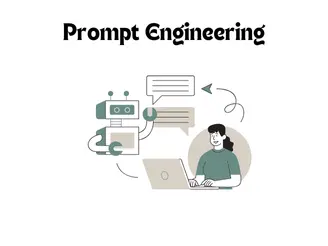



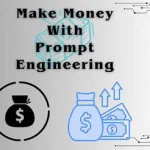
[…] prompt engineering is how to create powerful prompts to get the best answers out of language models like Chat GPT and […]
[…] any AI model either ChatGPT or copilot. Understanding how to communicate with AI models, such as ChatGPT, is one of the most in-demand skills now and in the future, since the possibilities with these […]
You commit an error. Let’s discuss it.